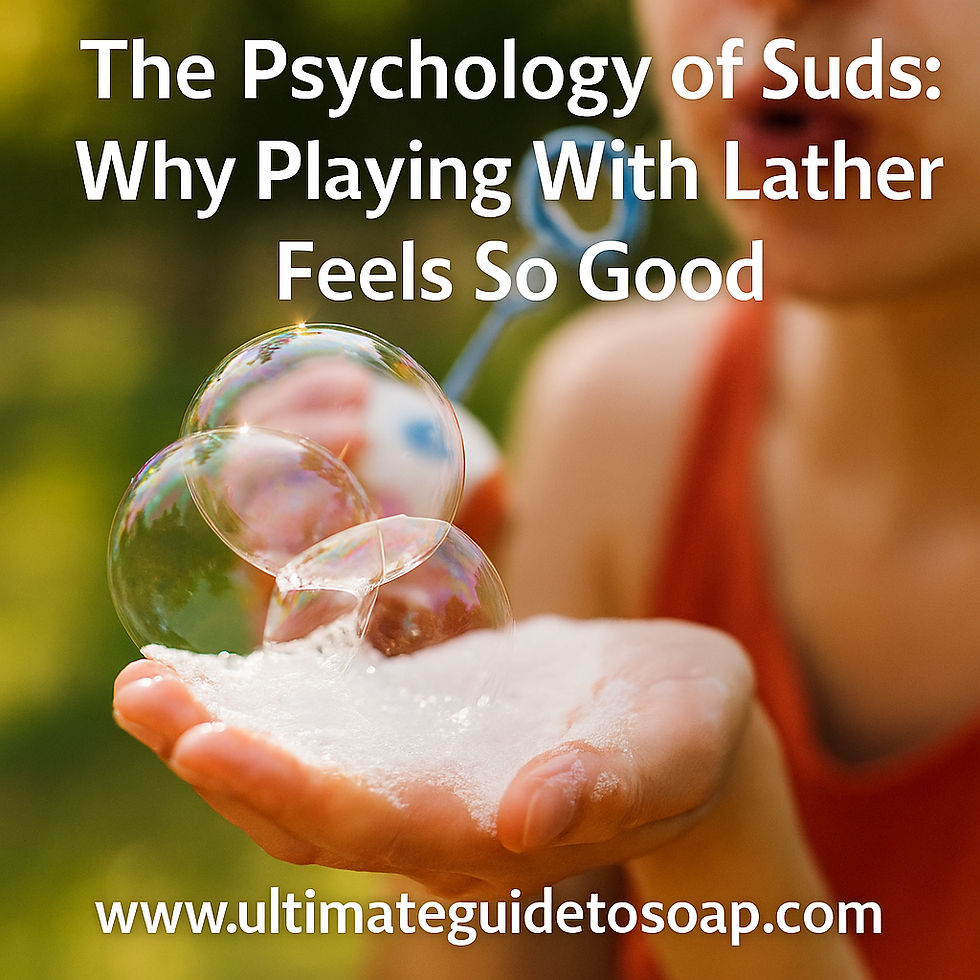What the Suds!? Cetyl Alcohol in Soap
- Jan 31, 2022
- 3 min read
I have talked about the benefits of cetyl alcohol and it's effects on lather stability many times and I use it as an additive in almost every single one of my recipes. It is my secret weapon in my shave soaps and creates the longest lasting, most amazing shave lather that doesn't fall or collapse and can literally last for days. I also recommend it in The Ultimate Guide to Hot Process Soap as one of the "Ultimate Lather Guide" tips. Let's take a more in-depth look at the benefits of cetyl alcohol and perform a brief experiment to show how it works and what exactly "lather stability" means.
Cetyl alcohol is white, solid, waxy looking substance that is normally melted and added to cosmetic products like lotions and it acts an emulsion stabilizer. It is a naturally derived alcohol from coconut and palm and consists primarily of cetyl and stearyl alcohols from plant oils. When it is added to soap it acts as lather stabilizer and extends the life of the lather. This is beneficial because with many soaps, they dissolve quickly in water and the lather diminishes, often requiring the user to resoap their loofah or washing cloth. It also increases the rate of lather formation and produces a very creamy and softening bar due to its moisturizing properties, even with soaps that have a more bubbly or cleansing lather.
To use cetyl alcohol in your soap recipe to stabilize and extend the lather, include 1-3% TOW (of the total oil weight). In my shave soaps, I use it at a full 3-5%. It will need to be melted before added and it should be noted that it hardens rather quickly as it cools. In cold process soap making and some hot process recipes, you will add the cetyl alcohol after trace. Another option for adding cetyl alcohol in hot process soaps is to add it after saponification. I add my cetyl alcohol after saponification by melting and mixing it with my PCSF (post cook superfat). I find that it also creates a little more fluidity because of the way that it reacts with the soap. If you are using LTHP, you might consider adding it after trace. In cold process soaps, it can cause the emulsion to thicken (creates a thicker “trace”) so this is something to be aware of.
WHAT THE SUDS?! Experiment:
Here is a brief experiment that I did this morning using lather from three sources: soap recipe A with 3%TOC cetyl alcohol, soap recipe A without cetyl alcohol and castile soap (outlier).
Results:






As you can see, the lather from the cetyl alcohol doesn't change very much over the course of an hour and it still remains full and fluffy while the other two soaps’s lather diminishes. I had to leave to go to the office this morning, but I also expect that when I get home this afternoon, there will still be lather from the cetyl alcohol because it is so effective at maintaining and stabilizing lather. (Update: Even after 36 hours, the soap made with cetyl alcohol still has a fluffy white lather!)
Jojoba oil also creates similar results because of the chemical reaction between jojoba wax and sodium hydroxide. For a more in-depth discussion about cetyl alcohol/jojoba, check out our other UG2HP blog posts!




Comments